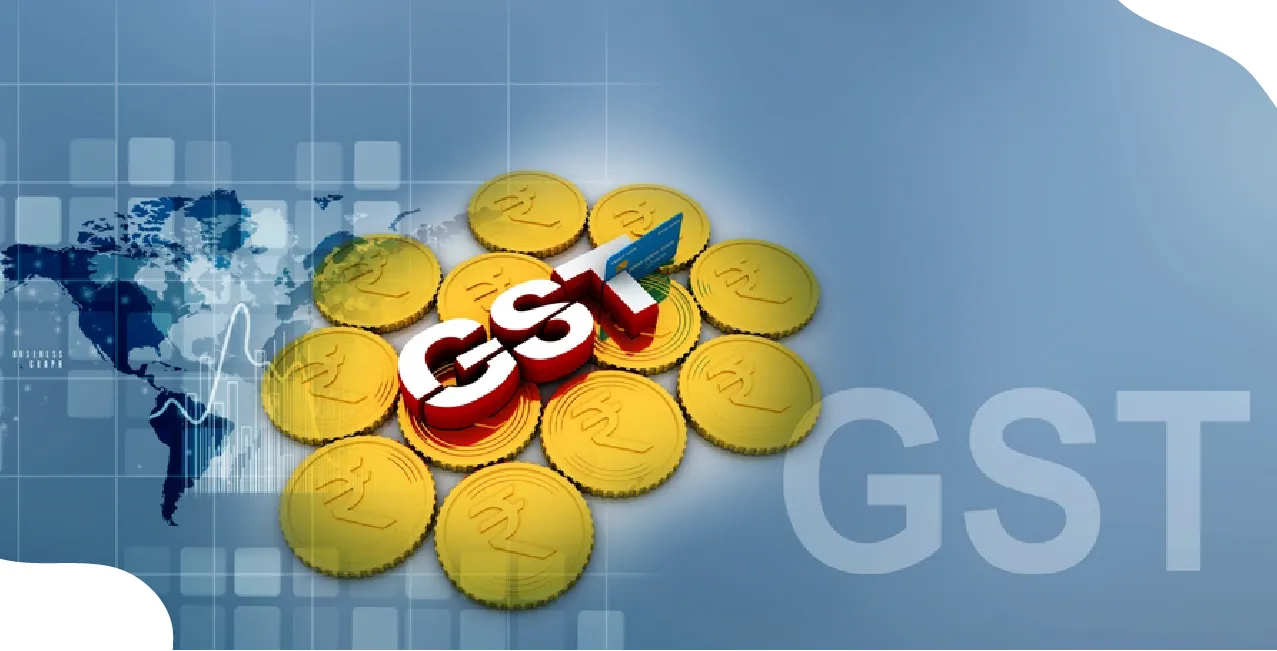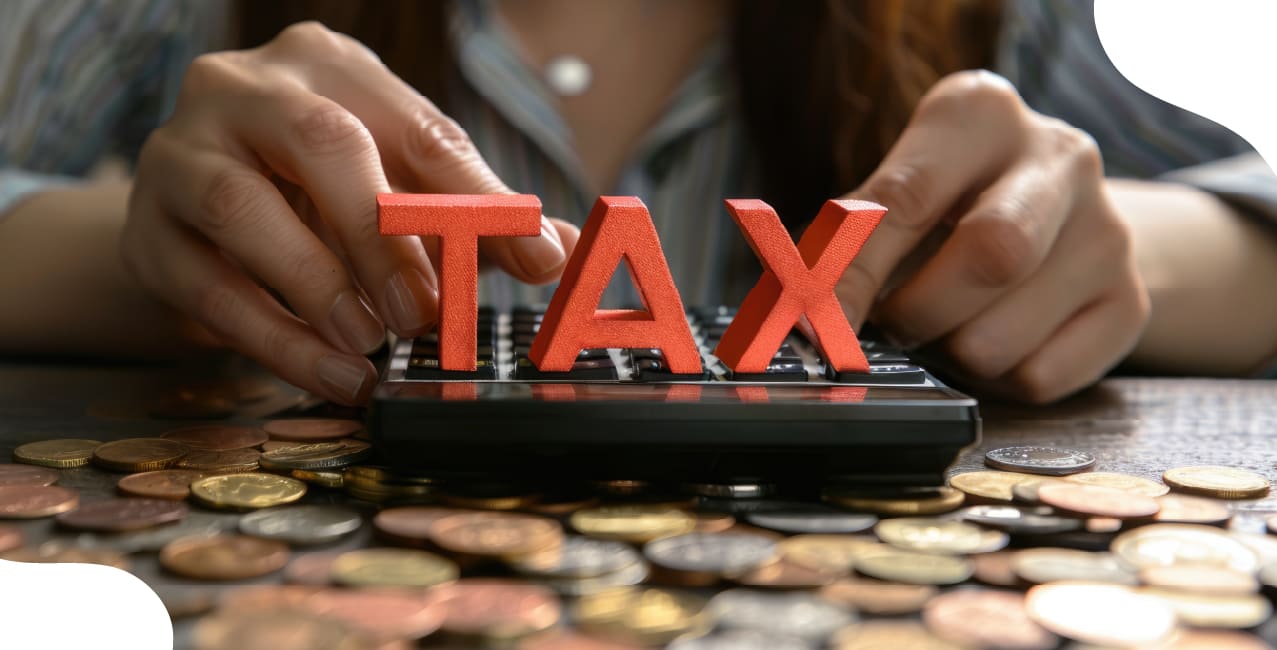
Author
LoansJagat Team
Read Time
6 Min
07 Aug 2025
What is GST? Meaning, Structure & How It Works in India
GST (Goods and Services Tax) refers to a multi-stage tax on goods and services in India. It eliminates the numerous old taxes, and the process of buying and selling becomes easier.
For Example:
- Puneet runs a small toy shop in Mumbai.
- Before GST, he paid different taxes like VAT, service tax, and excise duty.
- Now, he pays only one tax,” GST”, which makes his business easier.
- If Puneet buys toys for ₹1,000 at 12% GST, he pays ₹120 as tax.
- When he sells the same toys for ₹1,500, he charges ₹180 as GST.
- Puneet can subtract the ₹120 he already paid (input tax) from the ₹180 (output tax) and pay only ₹60 to the government.
GST Calculation Example:
This article uses Puneet's toy store as an example to help you understand how GST operates. Lower expenses and simpler taxes are beneficial for small businesses.
Structure of GST in India
GST (Goods and Services Tax) is a single tax system which is applicable on goods and services in India. To distribute the tax money equitably between the central and state governments, it is split into three, that is, CGST, SGST, and IGST.
- Example: Puneet owns a bakery in Delhi and sells cakes.
- When he sells within Delhi:
- CGST (Central GST): Goes to the central government.
- SGST (State GST): Goes to the Delhi government.
- When he sells to another state (like Maharashtra):
- IGST (Integrated GST): Goes to the central government, which shares it with Maharashtra.
- This system avoids double taxation and keeps business smooth.
GST Structure with Puneet’s Example:
Key Points:
- CGST & SGST apply to sales within a state.
- IGST applies to sales between states.
- GST makes taxes simpler and ensures fair sharing between governments.
Why IGST?
- Avoids double taxation (no separate state taxes).
- Ensures smooth interstate trade (no tax wars between states).
- The Centre acts as a middleman, collects IGST first, and then fairly distributes it to the buyer’s state.
Puneet can do it with ease since he pays a single tax rather than multiple taxes, and also, the rules do not differ throughout India.
GST Tax Slabs in India
GST (Goods and Services Tax) categorises products and services into various rates of taxes. These slabs make sure essential items are taxed less, while luxury items have higher taxes.
- Example: Puneet runs a small grocery store in Bangalore.
- He sells different items with different GST rates:
- Rice, milk (0%): No tax because they are essential.
- Soap, toothpaste (5%): Low tax for daily-use items.
- Packaged snacks (12%): Slightly higher tax as they are not essential.
- Mobile phone (18%): Higher tax because it’s a luxury product.
Car (28%): Highest tax for luxury goods.
- Rice, milk (0%): No tax because they are essential.
GST Tax Slabs (Example):
Key Points:
- 0% GST: Basic needs like food grains.
- 5% GST: Common household items.
- 12% & 18% GST: Processed goods & electronics.
- 28% GST: Luxury & sin products (like cars).
Puneet will charge GST at such slabs that will be reasonable to customers and convenient to his business.
Read More – What is IGST? Meaning, Difference from CGST & SGST Explained
How GST Works in India?
GST (Goods and Services Tax) is a single tax that applies at every step of the purchase and sale of goods or services. Businesses pay tax on their sales but get credit for tax already paid on purchases.
Example: Puneet's Chocolate Factory
- Buys Cocoa Beans (Raw Material)
- Price: ₹2,000
- GST @5%: ₹100 ( depends on state to state )
- Total Paid: ₹2,100 (₹100 GST goes to the supplier)
- Makes & Sells Chocolates to Shops
- Price: ₹5,000
- GST @18%: ₹900
- Total Charged: ₹5,900 (collects ₹900 GST from the shop owner)
- Pays Government
- GST Collected (₹900) - GST Paid Earlier (₹100) = ₹800 (final tax to govt)
GST Working Example:
Key Points:
- Businesses collect GST from customers.
- Get credit for GST paid on business purchases.
- Pay only the difference to the government.
- Regular businesses file monthly/quarterly returns.
The GST is simple since Puneet does not have to pay tax on tax and can credit taxes which have already been paid. The system prevents double taxation and makes business easier.
Also Read -Objectives of GST: Why Was GST Introduced in India?
Benefits of GST in India
GST (Goods and Services Tax) is a system of unifying all taxes with an aim of substituting the various indirect taxes applied in India. It facilitates conducting business and the free movement of goods within states.
Example: Puneet owns a small furniture workshop in Jaipur.
- Before GST:
- Paid VAT, excise, octroi, and other taxes
- Different tax rules in each state
- More paperwork and higher costs
- Paid VAT, excise, octroi, and other taxes
After GST:
- Pays only one tax (GST)
- Same rules across India
- Can sell furniture to other states easily
- Claims input tax credit on raw materials
- Pays only one tax (GST)
Benefits of GST for Puneet's Business
Key Advantages of GST:
- Removes tax-on-tax (cascading effect).
- Makes Indian businesses more competitive.
- Brings more small businesses into the tax system.
Puneet's business grew because GST made taxes simpler and helped him expand to other states without worrying about different tax laws. Customers also benefit as prices become more reasonable.
Challenges of GST in India
GST (Goods and Services Tax) simplified taxes, but also created some difficulties for small businesses. While it unified multiple taxes, the system can be complex to follow.
Example: ( Explain with Puneet example)
1. "Which Tax Rate Applies?" – Constant Confusion
- GST has 5 main tax slabs (0%, 5%, 12%, 18%, 28%), plus special rates for some goods.
- Puneet’s Problem: A notebook has 12% GST, but a luxury pen has 18%. He often mixes up rates, leading to wrong bills.
- Sector Impact: Restaurants face similar chaos – packaged food (12%) vs. dining (5%).
2. "Tech Trouble" – Online Filing Headaches
- GST returns must be filed monthly/quarterly on the GST portal.
- Puneet’s Struggle: He’s not comfortable with computers. A single mistake in GSTR-1 or GSTR-3B can trigger penalties.
- Bigger Issue: Over 40% of small businesses still rely on CAs for filings, adding extra costs.
3. "Cash Flow Block" – Delayed Refunds
- Input Tax Credit (ITC) refunds can take weeks or even months.
- Puneet’s Pain: He paid ₹5,000 GST on paper imports but waits 2 months to get it back. His working capital suffers.
- Sector Impact: Exporters face huge liquidity crunches due to slow refunds.
4. "Compliance Costs" – Hidden Expenses
- Hiring a CA (₹2,000–5,000/month) just for GST filings.
- Buying accounting software (like Tally) for invoice matching.
- Puneet’s Reality: "Earlier, I just paid VAT. Now, I spend ₹3,000/month extra on compliance."
5. "GST Compliance Rating" – Pressure to Stay Perfect
- The government rates businesses (like "Good, 4/5 stars") based on timely filings.
- Problem: Even a 1-day delay can lower ratings, affecting loans or tenders. Puneet worries about his shop’s score.
Puneet finds GST helpful but struggles with its complexity and paperwork. Small businesses like his face similar challenges daily.
Conclusion
For Puneet and other small business owners, GST is like a double-edged sword. On the one hand, it made interstate sales easier and simplified taxes by combining several state taxes into a single system. But daily operations are made more stressful by frequent changes, technical difficulties, and delayed refunds.
Indeed, the system is more transparent than it was before, and the Input Tax Credit (ITC) saves money. However, compliance is still difficult for small businesses with little funding. Puneet hopes that the government will continue to streamline the GST so that he can concentrate on selling stationery rather than battling with tax returns.
FAQs
Who needs to register for GST?
Businesses with over ₹40,00,000 sales (₹20,00,000 for some states) must register. Small businesses below this limit can register voluntarily to claim ITC.
How to file GST returns?
Returns are filed online every month or quarter using the GST portal. You need details of sales, purchases, and tax paid to complete the process.
What happens if I don’t pay GST on Late payments attract interest and penalties. Repeated delays can lead to fines or legal action, so it’s best to file on time.
Other GST Important Pages | |||
About the Author

LoansJagat Team
‘Simplify Finance for Everyone.’ This is the common goal of our team, as we try to explain any topic with relatable examples. From personal to business finance, managing EMIs to becoming debt-free, we do extensive research on each and every parameter, so you don’t have to. Scroll up and have a look at what 15+ years of experience in the BFSI sector looks like.

Quick Apply Loan
Subscribe Now
Related Blog Post

LoansJagat Team • 22 Sep 2025
_of_Income_Tax_Act.jpg)
LoansJagat Team • 22 Sep 2025

LoansJagat Team • 22 Sep 2025